Understanding Gill Nets: Their Construction and Impact
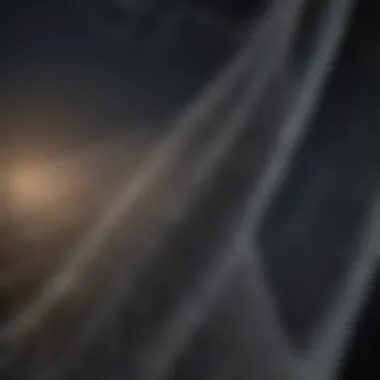
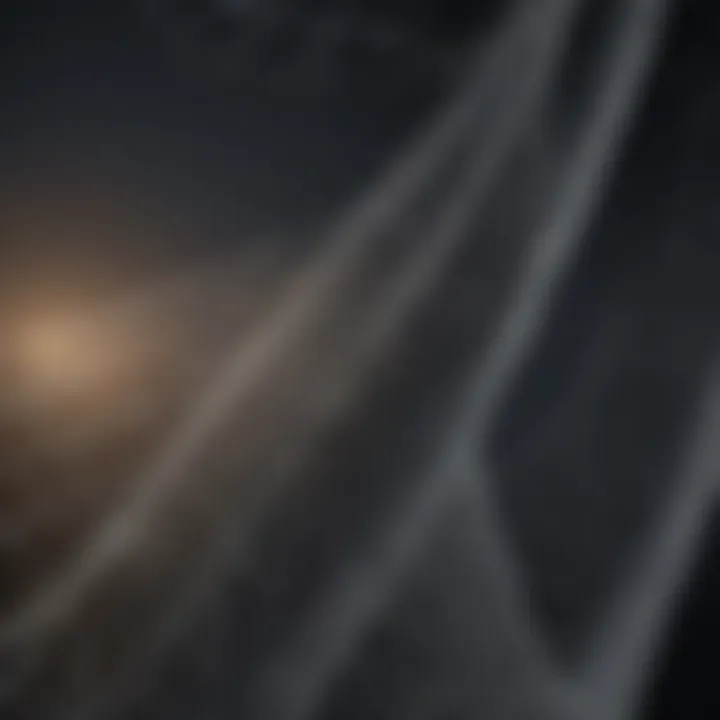
Intro
Gill nets have a significant role in the fishing industry, yet they remain wrapped in layers of complexity. These nets, designed to capture fish effectively, are made of a mesh material that allows fish to pass through while entangling them by their gills. As these nets become integral to conversations around sustainable fishing and ecological management, understanding them is paramount for anyone involved or interested in fisheries.
Historically, gill nets have been a staple in various fishing practices. Their construction and operation have evolved, reflecting advances in material science and fishing techniques. However, the discussions surrounding their ecological impacts and regulatory frameworks are more pressing today, with increasing attention on maintaining balance in marine ecosystems.
"Gill nets, though efficient, can be a double-edged sword—while they provide essential means to gather fish, they also pose significant threats to marine biodiversity."
As we delve into this examination, it is essential to address not just the mechanics and types of gill nets but also their historical context and ethical implications. The aim is to foster a deeper understanding of how these tools operate within the delicate tapestry of aquatic environments.
In the upcoming sections, we will explore the following:
- The construction and variety of gill nets
- Their ecological consequences
- Historical aspects and current regulations
- The ethical considerations in their usage
By unpacking these topics, we intend to provide readers with a comprehensive framework for evaluating gill nets beyond their immediate functionality, appreciating the intricate role they play in fisheries management and conservation efforts.
Prelims to Gill Nets
Gill nets are essential tools in the realm of fisheries, representing a method of catch that has evolved through time, yet remains integral to contemporary fishing practices. Understanding the dynamics surrounding gill nets is imperative for anyone engaged in marine studies, fishing regulations, and conservation efforts. This introduction serves to lay the groundwork for a detailed exploration of gill nets’ significance, functioning, and their multifaceted implications on marine ecosystems.
Definition of Gill Nets
At its core, a gill net is a type of fishing net constructed with mesh panels designed to capture fish by their gills. The fish swim into the net, becoming entangled as they attempt to escape. This rather straightforward mechanism belies the intricacy involved in its applications and designs. Gill nets generally vary in mesh sizes, lengths, and configurations, allowing them to target different species effectively. While they are primarily used for catching fish, these nets can also unintentionally ensnare a variety of marine animals, raising significant ecological concerns.
Historical Use of Gill Nets
Gill nets have been around for centuries, tracing their use back to ancient civilizations. Spearfishing and nets were among the earliest methods employed by humans to secure food from the sea. Historical records indicate that various cultures devised localized variations of gill nets to adapt to their unique fisheries.
One notable instance dates back to the indigenous peoples of the Pacific Northwest, who utilized gill nets to catch salmon during the fish's spawning season. These nets were often hand-woven from plant fibers or animal sinew, showcasing the ingenuity of early fishing practices. The introduction of modern materials has since enhanced their effectiveness and durability, leading to their widespread adoption worldwide by commercial and artisanal fishers alike.
Current Applications in Fishing
In today’s world, gill nets are employed across various fishing sectors, serving as a critical tool for both commercial and recreational anglers. Their practical applications can be observed in numerous marine environments, from coastal fisheries to open ocean exploits. Some of their significant advantages include:
- Cost-Effectiveness: Gill nets tend to be more affordable compared to other fishing gear, making them accessible for small-scale fishers.
- Versatility: They can be used in both freshwater and saltwater settings, allowing for a broad range of applications.
- Target Species: By adjusting mesh sizes, fishers can selectively target specific fish species, optimizing catch efficiency.
However, it's crucial to recognize the need for responsible use. Many regions have instituted regulations concerning gill net fishing, intending to mitigate bycatch and support sustainable practices.
The responsible deployment of gill nets can significantly enhance fishery management, yet careful thought is needed to balance human needs with ecological welfare.
Gill Net Construction
Gill net construction is a fundamental aspect of understanding how these tools function in various fishing environments. This section aims to shed light on the materials, design, and mesh configurations that go into crafting gill nets. Knowing the composition and structure of these nets is crucial for appreciating their efficacy and environmental impact.
Materials Used
Gill nets are predominantly made from synthetic materials such as nylon, polyethylene, or monofilament. Nylon is popular for its strength and durability, which allows nets to withstand the harsh conditions of the marine environment. This material also has some inherent flexibility, making it easier to handle.
On the other hand, polyethylene nets, while lower in tensile strength, have favorable properties like resistance to UV rays, reducing degradation from sunlight. Some nets even incorporate bio-based materials, which are still in their infancy in terms of widespread use but may hold great potential for sustainability.
Moreover, the choice of material not only affects the net's longevity but also its visibility in the water, impacting the capture rate of fish species. For example, brighter colored nets may entice different species or change the behavior of fish altogether.
Design Features
The design of gill nets involves more than just a basic mesh framework; it's an intricate balance of several factors. The float line and weighted line are critical components, with floats keeping the net at the water's surface while weights anchor it below, creating a wall-like barrier. This dualistic approach allows gill nets to target different species at varying depths, whether targeting fish species that swim near the surface or those that dwell deeper.
Moreover, the shaping of the net plays a vital role as well. Some nets feature a rectangular shape for stationary setups, while others take on a conical shape that is effective for drifting purposes, allowing them to capture fish from multiple angles.
At times, nets are configured with varying depths and widths to optimize catch efficiency, providing flexibility in terms of deployment in different fishing scenarios. Design prowess is essential since poorly designed nets can lead to ineffective captures and increased environmental damage.
Mesh Size and Configuration
An important consideration in gill net construction is mesh size. The size of the mesh affects the types and sizes of fish captured. Smaller openings may catch juvenile fish, which can have long-term implications for fish populations, including compromised breeding stocks. The configuration of the mesh is just as important; square-shaped mesh allows for better fish capture rates but may also increase the risk of snagging in debris.
Variable mesh sizes can be employed within the same net to cater to different species. For instance, a gill net with larger holes in the middle and smaller holes on the edges can effectively capture larger target species while allowing smaller, non-target fishes to escape unharmed, reducing bycatch.
When configuring the net, balancing between catch efficiency and environmental responsibility can be tricky yet crucial for sustainable fishing practices. Overall, the interplay of materials, design, and mesh sizing makes the construction of gill nets a critical topic that influences fishing success rates, species affected, and long-term ecological health.
"When crafting gill nets, it's not just about catching fish; it's about understanding the ecosystem and the delicate balance within it."
The construction of gill nets is a nuanced subject that caters to both the objectives of fishermen and the conservation of fish populations, emphasizing a dual focus on efficiency and responsibility.
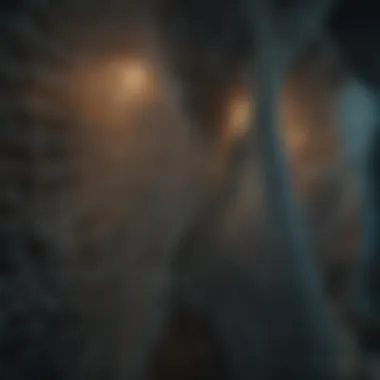
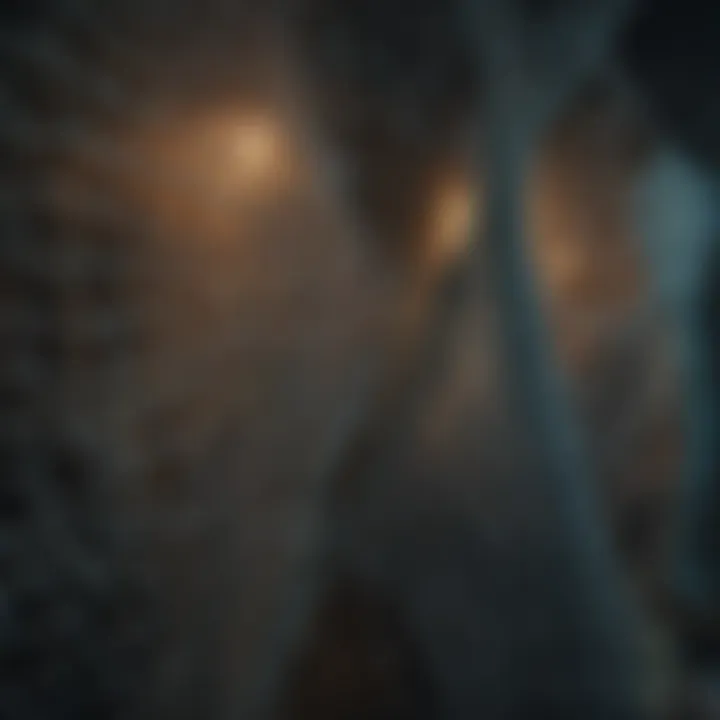
Types of Gill Nets
Understanding the different types of gill nets is crucial for comprehending their function and ecological ramifications. Each type serves its own unique purpose, thereby influencing the efficiency of fish capture and the impact on marine ecosystems. These nets have specific designs and applications that cater to various fishing needs. Below, we delve into three primary types of gill nets: drift gill nets, set gill nets, and fly nets, each with distinct characteristics and uses.
Drift Gill Nets
Drift gill nets are perhaps the most widely recognized form of gill netting. They are primarily designed to float freely in the water column, allowing them to drift with the current. This movement is advantageous for targeting pelagic species—those that swim in the open water, away from the bottom.
The key benefits of drift gill nets include:
- Versatility: They can capture a variety of fish species, including larger fish like cod and tuna, making them a go-to for commercial fishermen.
- Operational Efficiency: They do not require anchoring or specific placement, simplifying the deployment and retrieval process.
- Wide Catch Range: As they drift, they tend to intercept fish that are moving through the water, thereby increasing catch potential.
However, the use of drift gill nets does raise significant ecological considerations. When not managed properly, they can lead to high levels of bycatch. This includes non-target species such as dolphins, sea turtles, and various seabirds, which can become entangled.
Set Gill Nets
In contrast, set gill nets are anchored in a fixed position in the water. They are usually deployed near the bottom or along coastlines, targeting specific fish populations that traverse these habitats. The nets are designed to capture fish as they swim into the net and become entangled by their gills.
Advantages of set gill nets include:
- Targeted Fishing: Fishermen can strategically place these nets based on known fish behavior, improving the likelihood of catching desired species.
- Lower Bycatch Rates: The fixed position of the net means that it’s less likely to catch unintended species if the nets are carefully placed and monitored.
- Durability: Typically made from thicker materials, these nets can withstand harsh sea conditions for a longer duration.
Despite these advantages, set gill nets have their downsides as well. For instance, they can sometimes obstruct migratory routes for fish or other marine life, leading to habitat alteration.
Fly Nets
Fly nets, also known as fly-casting gill nets, represent a less common, yet interesting approach within the gill net category. They are employed mostly in small-scale fishing scenarios, where nets are cast by hand, almost resembling a fly in motion. These nets typically target species that are closer to the water's surface.
The principal attributes of fly nets include:
- Simplicity: They do not require complex gear or technology, making them accessible for artisanal fishers.
- Selective Capture: Fly nets allow for targeting fish that inhabit the upper layers of water, reducing the likelihood of catching larger, deeper-swimming species.
- Environmental Friendliness: Their minimalistic nature minimizes habitat disruption, thereby promoting sustainability in local fishing practices.
Nonetheless, the effectiveness of fly nets is highly reliant on the fisher's skill. Mastering the technique of casting and retrieving can take considerable practice.
Mechanism of Gill Nets
Understanding the mechanism of gill nets is vital for grasping their role in fishing practices. Gill nets function primarily by utilizing the natural behavior of fish. When fish swim through the mesh, they encounter the netting, often getting entangled. This unique capture method mimics how fish navigate their environments while also aligning with the principles of sustainability and resource management in fishery practices.
How Gill Nets Capture Fish
Gill nets capture fish using a straightforward yet effective mechanism. When a fish swims, its head can pass through the netting's mesh, but its gills become entangled. This is because as the fish exhales, the gill plates open outward, and in so doing, they catch onto the net. Essentially, the gill net acts as a filter, allowing fish of certain sizes to get more easily trapped while letting smaller ones pass through unharmed. This selective capture is crucial for maintaining fish populations and ensuring that younger fish have the chance to mature and breed.
The placement of these nets in water can also influence their effectiveness. Drift nets, for instance, float freely and can capture swimming fish species that generally travel at various depths. Set nets, on the other hand, are anchored to the seabed, which may make them effective for capturing bottom-dwelling creatures.
In terms of technical aspects, the mesh size can be finely adjusted. A smaller mesh traps smaller fish, fostering future generations while providing ample supply for fishing enthusiasts and professionals alike. Moreover, the importance of properly maintaining these nets cannot be overstated, as entanglements that become too large or too small due to wear and tear can lead to issues in capturing the intended species.
Target Species and Selectivity
Gill nets are designed to target specific fish species based on factors like size and behavior. The selectivity factor means that not every fish that swims into a gill net will be caught, which is a double-edged sword in fishing. On the one hand, targeting specific fish types helps to manage populations; on the other hand, non-target species can become problematic when they are unintentionally captured, leading to bycatch.
When setting gill nets, fishers often consider the species most common in the area they are fishing. For example, nets might be designed specifically for capturing salmon during their migration or for targeting certain flatfish that dwell closer to the seabed. This strategic approach contributes to better fishery practices, helping advocates of sustainability mitigate the risk of overfishing.
There are many ecological concerns linked to fish selectivity. Some fish species serve not only as population regulators but also contribute essential functions within their ecosystems. Therefore, careful consideration must be given to the mesh size, positioning, and time of the year regarding gill net use to ensure the delicate balance of marine ecosystems is maintained.
As fish populations face pressure from various factors, including habitat loss and climate change, understanding their behaviors and movements also influences how gill nets can be effectively and ethically used.
With the proper implementation of gill nets, practitioners can adhere to regulations that promote the health of marine environments while maintaining a vital resource for fishing communities.
Ecological Considerations
The ecological impact of gill nets is a complex topic that deserves thoughtful exploration. Gill nets are designed to catch fish by entangling them, but their effects ripple throughout the marine ecosystem. Understanding these implications is crucial, especially for those involved in sustainable fishing practices. This section delves into the various factors contributing to the ecological considerations surrounding gill nets, highlighting their benefits and the challenges they present.
Impact on Marine Life
Gill nets can significantly affect marine life. On one hand, their targeted design allows for efficient fishing of specified species. However, the same nets can inadvertently ensnare non-target species, leading to unintended consequences. For instance, when dolphins or sea turtles get caught in gill nets, it can cause distress and ultimately fatality. This unintended bycatch can disrupt local food webs, alter predator-prey dynamics, and contribute to population declines of vulnerable species.
Research has shown that certain areas see an alarming number of bycaught animals, which rings alarm bells for conservationists. Here’s a brief overview of some key impacts on marine life due to gill nets:
- Target Species Reduction: Over-reliance on gill nets can lead to unsustainable captures.
- Biodiversity Loss: The bycatch problem can lead to significant drops in biodiversity.
- Altered Migration Patterns: Disruption in populations may cause shifts in migration strategies for different species.
"The balance of marine ecosystems is fragile; each species plays a part that influences the whole."


As researchers continue to study these nets, it becomes clearer that their design must be reconsidered to minimize negative impacts, urging for innovations that could prevent marine deaths while still fishing effectively.
Bycatch Issues
Bycatch is arguably one of the most pressing issues related to gill net usage. Bycatch refers to the unintended capture of non-target species, which can include fish, mammals, birds, and even various types of sea life. Depending on the locality and type of net used, bycatch can range from a minor inconvenience to a serious threat to species survival.
Efforts to quantify bycatch reveal some staggering figures. For example, studies indicate that over a quarter of fish caught globally may not be the target species. This creates secondary ecological issues, including:
- Population Imbalance: Loss of bycaught species can lead to overpopulation of other species, affecting ecosystem health.
- Endangerment of Species: Vulnerable or endemic species may face extinction due to high bycatch rates.
- Economic Strain on Fisheries: Fishermen may incur losses from damaged nets or regulatory fines meant to prevent excessive bycatch.
The conversation around bycatch spurs discussions on recycling, habitat management, and the implementation of new technologies to minimize capture of non-target species. Given the urgency of this issue, solutions must be practical, ensuring that fishermen can carry on their work effectively.
Habitat Alteration
Gill nets, while effective for capturing fish, can also contribute to habitat alteration. This issue, though often overlooked, is significant. When deployed, gill nets can drag along the ocean floor, damaging delicate habitats like coral reefs, sea grass beds, and other essential marine environments.
The physical presence of these nets may:
- Disrupt Ecosystems: Habitats are home to numerous species; altering them means threatening their survival.
- Cause Erosion: Repeated use of gill nets can lead to coastal erosion by destabilizing the substrate.
- Affect Water Quality: Damaged habitats lose their ability to filter water and regulate nutrient flows, thus impacting overall marine health.
To counter these negative outcomes, alternatives are being developed focusing on sustainable practices. Fishermen are urged to educate themselves about the sensitive environments they operate within. Adjusting practices based on scientific data can serve to protect critical habitats while allowing fishing to continue.
Regulatory Framework
The regulatory framework surrounding gill nets is a foundational aspect of responsible fisheries management. It encompasses international mandates, national guidelines, and local legislation that work together to ensure sustainable fishing practices. As global fish populations face unprecedented pressures from overfishing and habitat degradation, these regulations are vital not just for protecting marine species but also for fostering equitable practices among fishing communities.
International Regulations
At the global level, various treaties and agreements set the stage for how fisheries are managed. The United Nations recognizes the need for cooperative regulation, leading to frameworks like the United Nations Fish Stocks Agreement. This initiative seeks to conserve and manage straddling fish stocks effectively, providing a unified approach that transcends national borders.
- Key aspects of international regulations include:
- Monitoring fish stocks and biological data
- Establishing catch limits
- Preserving vulnerable marine ecosystems
- Facilitating cooperation among nations to combat illegal, unreported, and unregulated fishing (IUU).
These frameworks are crucial, as fish stocks don’t respect geopolitical boundaries; if one country overfishes, neighboring countries may suffer economically and ecologically. By adhering to these regulations, countries can more effectively manage their shared resources.
National Policies
Turning to national policies, countries have the authority to tailor their regulations based on local conditions and ecosystems. For instance, in the United States, the Magnuson-Stevens Fishery Conservation and Management Act plays a pivotal role. It mandates regional councils to create fishery management plans that address gill net usage by setting forth allowable practices that minimize harmful impacts.
- Benefits of national policies include:
- Specific guidelines for mesh sizes, net types, and fishing seasons based on local fish populations.
- Allocation of quotas for commercial versus recreational fishermen.
- Penalties for non-compliance, ensuring accountability.
Following national policies not only sustains fish populations but also fosters community resilience by promoting fair access to resources for local fishers.
Local Fishing Laws
On the local level, fishing laws further refine what was established by national policies. These regulations often address community-specific issues, such as preserving local biodiversity or enhancing spawning areas. For example, certain coastal regions may impose restrictions on gill net use during breeding seasons to protect vulnerable species.
- Features of local fishing laws often include:
- Specific area closures to protect nurseries or habitats.
- Restrictions based on local conditions, such as water clarity or temperature.
- Community-led initiatives to manage fisheries sustainably.
By integrating local realities into fishing regulations, these laws empower communities while safeguarding marine environments. As such, they set a precedent for collaboration and encourage a stewardship mentality among local fishers.
Ethical Considerations
The ethical implications surrounding gill nets in fishing practices aren’t just about what’s legal or regulatory; they delve into deeper realms of sustainability and animal welfare. As stewards of the marine environment, understanding these ethical dilemmas becomes crucial. It helps define how societies balance their needs for seafood with the responsibility of preserving the oceans. Fish and other marine life play integral roles in their ecosystems, and using methods that can disrupt these balances prompts operators and communities to reconsider their fishing practices.
Sustainability in Fishing Practices
Sustainability is the backbone of any ethical consideration in fisheries management. Gill nets, while effective in capturing fish, come with a hefty price if not used mindfully. Many fisheries face a crossroads, torn between maximizing catch and ensuring long-term viability. Implementing sustainable practices encourages fishermen to operate within limits defined by scientific research and environmental assessments.
Some key aspects of sustainability in relation to gill nets include:
- Selective Fishing: By utilizing nets designed to reduce bycatch, fisheries can target specific species while allowing others to escape unharmed. This strategy minimizes the unintentional capture of non-target species, thus supporting biodiversity.
- Seasonal Restrictions: Setting time frames for gill net usage can prevent overfishing. This approach aligns with the breeding cycles of fish populations, ultimately allowing stocks to recover and thrive.
- Community Engagement: Encouraging fishermen to engage in decision-making processes ensures that local knowledge informs sustainable practices. Such collaboration can lead to innovative solutions tailored to specific habitats.
Effective stewardship of marine resources depends on a collective commitment to sustainability and ethical fishing practices.
Animal Welfare Concerns
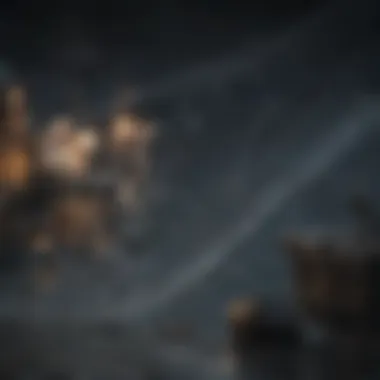
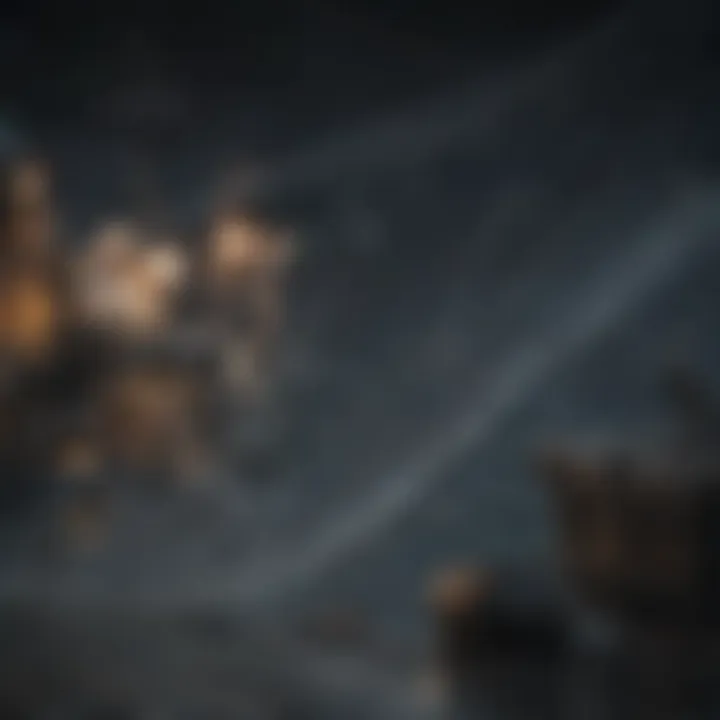
The welfare of animals caught in gill nets highlights another crucial ethical dimension. Gill nets can unintentionally injure or kill marine creatures, raising serious concerns about cruelty. Fish caught in gill nets may struggle for long periods, leading to stress, injury, and death. Examination of this facet can drive change in how nets are designed and used.
Focusing on animal welfare presents several considerations:
- Reduced Suffering: Innovations in net design can lead to improvements that reduce the time fish remain entangled. Using softer materials or designs that allow for quicker release can minimize pain and suffering.
- Monitoring and Technology: The integration of technologies such as acoustic devices or camera feeds provides real-time data to fishermen, helping them locate or retrieve nets more efficiently, thereby lessening the odds of prolonged entrapment.
- Public Awareness: Raising awareness about the conditions faced by trapped marine life encourages consumers to support sustainable seafood options. Educated consumers can influence market trends, pushing for change in practices that prioritize animal welfare.
In summary, the ethical considerations behind gill net usage invoke a broad spectrum of issues ranging from sustainability to animal welfare. Navigating these waters is essential for ensuring that fishing practices evolve in harmony with ecological integrity and ethical responsibilities.
Challenges in Gill Net Use
The utilization of gill nets brings with it a set of unique challenges that necessitate careful consideration. These nets, while effective for catching a multitude of fish species, also face scrutiny due to their potential ecological impacts and the socioeconomic implications of their misuse. Addressing these challenges is imperative for ensuring a balance between fishing practices and environmental conservation. In this section, we will delve into two main challenges: overfishing and resource depletion, alongside the complexities involved in marine policy conflicts.
Overfishing and Resource Depletion
Overfishing has emerged as a critical issue in numerous fisheries across the globe, where gill nets are a common tool. These nets can target certain species very effectively, leading to substantial catches in a short period. However, this large-scale harvesting often results in stocks being pushed beyond their sustainable limits. When fish populations are over-exploited, not only are the immediate impacts felt in terms of reduced numbers of certain species, but the ripple effects can disrupt entire marine ecosystems.
Overexploiting a specific fish species can lead to a domino effect, threatening the survival of others in the food chain. For example, if a predator fish is overfished, it enables an increase in the prey species, which can, in turn, lead to competition for resources among other fish populations. This chain reaction can destabilize habitats and diminish biodiversity in fishing areas.
Factors Contributing to Overfishing
- Inadequate regulations: Insufficient enforcement of fishing laws can lead to unauthorized catches.
- Economic pressures: The need for economic viability can drive fishers to prioritize immediate profits over long-term sustainability.
- Technological advancements: Improved fishing gear and methods can enhance catches but also exacerbate depletion.
By focusing efforts on sustainable fishing methods, such as selective catching and size limits, we can mitigate these risks.
Marine Policy Conflicts
Conflicts arising from marine policy often complicate the gill net narrative. As various stakeholders—fishermen, environmentalists, policymakers—come together, differing priorities can create friction. While some advocate for stricter gill net regulations to protect fish stocks, others emphasize the necessity for these nets in maintaining local economies and food supplies.
This divergence in priorities can lead to
- Lack of consensus: Fisherfolk might feel marginalized if their needs are overshadowed by environmental concerns.
- Ineffective legislation: Policies that don't consider local practices may fail in enforcement and compliance, leading to further conflict.
- Miscommunication: A gap exists between scientists advocating for reforms and fishers who require immediate solutions to their everyday challenges.
An example of such conflict can be seen in many coastal communities where gill nets are a tradition. The push for conservation can seem like an attack on the sustenance they rely on, which can lead to resistance against such policies.
"Policies that don't engage local fishers in dialogue are bound to hit rough waters."
The path towards successful marine governance lies in finding a framework that satisfies environmental goals while also respecting the needs of local communities. Integrating traditional ecological knowledge into decision-making can help bridge these divides.
In summary, it’s clear that challenges associated with gill net use encompass a wide range of issues. Understanding the intricacies surrounding overfishing and marine policy is crucial for crafting effective solutions that respect both the environment and the livelihood of fishing communities.
Innovations and Alternatives
The fishing industry constantly evolves, adapting to environmental challenges and regulatory frameworks. Innovations and alternatives in gill net practices represent a significant step towards sustainable fishing. As concerns around overfishing and bycatch grow, these advancements offer hope for better fishing practices. They address crucial aspects of efficiency, impact on marine ecosystems, and the overall fishing experience.
Technological Advances
Technology has played a pivotal role in reshaping fishing methods. One such advancement is the use of smart gill nets equipped with sensors. These nets can monitor species catch rates and sizes in real-time. By providing data to fishermen, they improve decision-making on which areas are most sustainable for fishing. Additionally, certain nets are now made from biodegradable materials, reducing long-term pollution in our oceans.
Not only can technology enhance monitoring, but it can also assist in selective fishing. For example, nets with adjustable mesh sizes allow selective capture of target species while minimizing bycatch. Innovations like LED lights integrated into nets can deter unwanted species, leading to a more responsible fishing environment.
Alternative Fishing Methods
While gill nets serve their purpose, exploring alternative fishing methods is essential. One promising alternative is pole-and-line fishing. This method is not just about capturing fish; it's about ensuring minimal impact on surrounding marine life. Fishermen use a simple line with a hook and bait, leading to less collateral damage and more energy-efficient catch.
Another approach gaining traction is traps. Fish traps (or pots) can be designed to allow smaller fish or non-target species to escape. This technique works particularly well in nearshore environments where target species can be specifically identified, significantly enhancing sustainability efforts.
"Innovations in fishing practices not only improve the efficiency of catches but also protect the ocean's delicate balance."
Combining these methods with the latest technology forms a promising path for the industry. Fishermen can remain profitable, while fish populations have a chance to recover from the pressures of overfishing.
Ending
The conclusion serves a pivotal role in crystallizing the discussions surrounding gill nets throughout the article. It distills the core insights into a cohesive summary, enabling readers to grasp the significance of these fishing tools in the context of marine ecosystems and sustainable practices. As gill nets have been a longstanding method in fishing, their implications resonate far beyond mere capture techniques, intertwining with ecological, ethical, and regulatory threads that shape contemporary maritime practices.
Summary of Key Points
To recap some critical facets:
- Historical Context: Understanding the evolution of gill nets offers a lens into their current design and applications. Traditionally used for centuries, they have become integral to various fishing cultures worldwide.
- Types and Functions: Recognizing the different forms of gill nets—drift, set, and fly nets—illustrates their diverse applications within fisheries, targeting various species while posing unique challenges.
- Ecological Impact: The potential dangers of bycatch and habitat alteration highlight an urgent need for awareness and regulation. Bycatch not only threatens non-target species but can disrupt entire ecosystems, necessitating prompt solutions in fisheries management.
- Regulatory Landscape: Navigating through international and national policies provides insight into how regulations foster sustainable fishing practices, ensuring that gill nets don't become synonymous with ecological degradation.
- Future Innovations: Continuing advancements in technology underscore a hopeful horizon for the fishing industry. Alternative practices aim to balance the demands of fishing with environmental stewardship, propelling a sustainable approach for generations to come.
Future Outlook for Gill Nets
Looking ahead, the future of gill nets hinges on a delicate balance between tradition and innovation. As scientific research and technology progress, there is a distinct opportunity to refine these fishing nets, making them even more efficient and less harmful to marine environments.
- Adaptation and Policy: Policymakers are increasingly leaning on data to inform regulations that address both economic needs and ecological protection. Such policies may enforce stricter controls on gill net mesh sizes and operational areas to reduce bycatch risks.
- Technological Integration: The integration of smart technologies, including sonar and underwater drones, can enhance the monitoring of gill nets, ensuring that unintentional catches can be minimized and managed effectively.
- Education and Awareness: A key element in shaping the future also lies in educating fishery practitioners about sustainable practices. Greater awareness about the ecological impacts tied to gill nets can drive better decision-making in fisheries, highlighting the importance of conservation.
- Community Engagement: Local fishing communities play an essential role in the management of gill nets, and their insights can lead to more tailored solutions that address regional issues. Steps toward collaborative governance will likely produce better outcomes for marine biodiversity.
In summary, as we navigate through both challenges and opportunities in the realm of gill nets, the path forward requires an unwavering commitment to balancing ecological integrity with the livelihoods that depend on fishing. By engaging stakeholders, advancing technology, and adhering to sustainable practices, the future can be bright for both gill nets and the broader marine environments they interact with.



